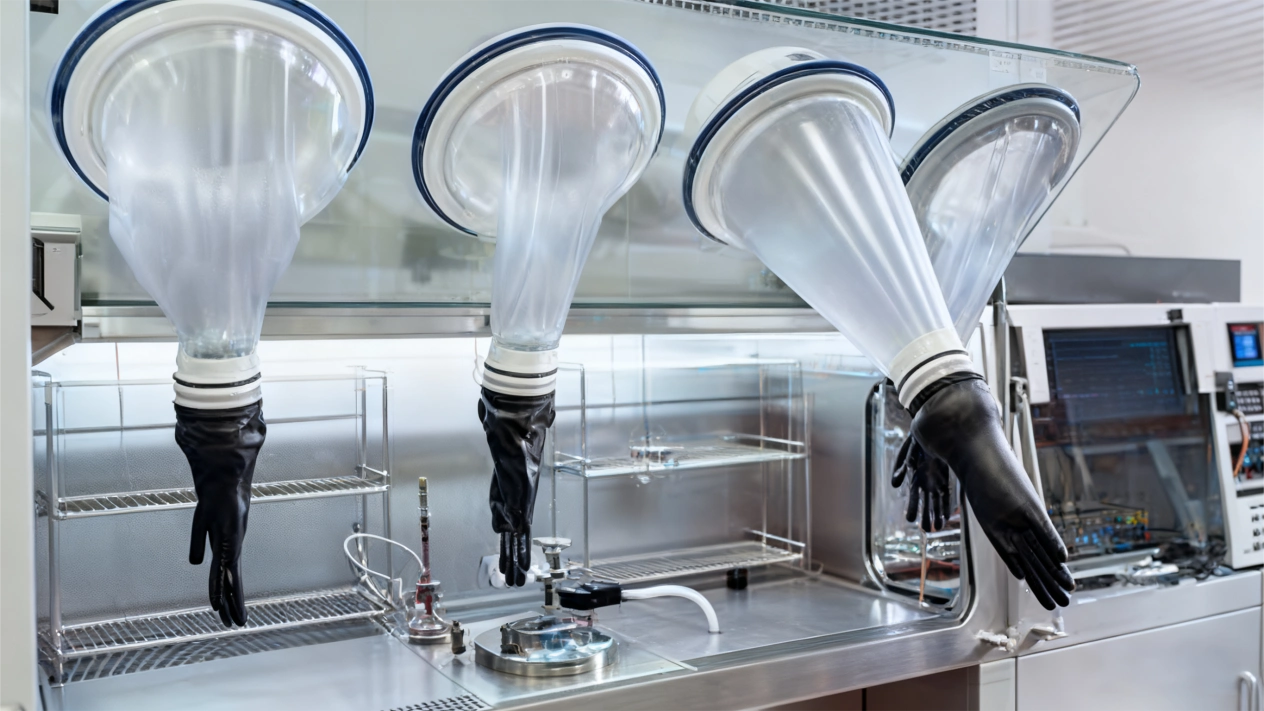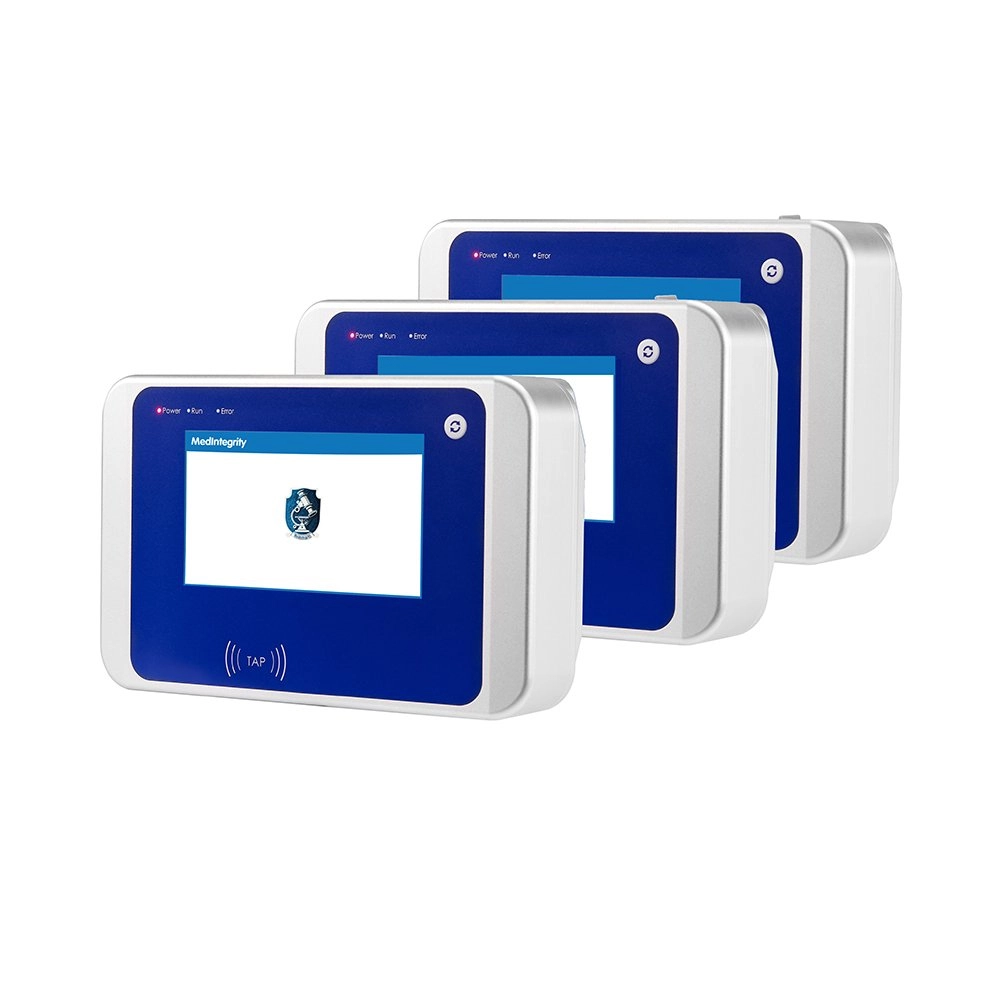Positive vs Negative Pressure: Choosing the Right Glove Integrity Test for GMP Compliance
Positive vs Negative Pressure: Choosing the Right Glove Integrity Test for GMP Compliance

In Good Manufacturing Practice (GMP) environments, being sterile in every respect is not only preferable—it’s something you have to be. One of the most important things about aseptic processing is getting gloves in isolators or restricted access barrier systems (RABS) without damage and free of leaks. Thus, integrity testing of gloves is the first line of defense against contamination in drug, medical, and biotech industries. A choice between positive and negative pressure glove tests is a significant part of complying with GMP regulations, being effective, and keeping everyone safe.
The Importance of Glove Integrity Testing in GMP Environments
Glove ports are key connection points between people and sterile areas. They let workers handle materials inside isolators without touching them directly. But, if the gloves on these ports are damaged, they can become a source of contamination. What’s more, by finding even the smallest leaks or flaws in gloves, these tests stop possible contamination, protect workers, and make sure processes are safe.
Regulatory Requirements for Glove Integrity Testing in GMP Facilities
Groups like the FDA and EMA demand tight control over aseptic processing areas. First of all, the testing methods must follow the rules of the FDA and GMP, as well as the requirements of USP and EP. Also, ISO 14644-7 and EU GMP Annex 1 highlight the need for regular glove integrity testing to promise sterility all the time.
Consequences of Glove Failure in Aseptic Processing
A single tear in a glove can cause product recalls, the loss of a whole batch, or even harm to patients. Gloves must be leak-proof to stop products from getting contaminated. This could lead to bad results like recalls or medicines that don’t work. Thus, finding problems early with good glove integrity testing is something you just have to do.
Overview of Glove Integrity Testing Methods
There are a few ways to check if a glove is intact, depending on what you need:
- Pressure Decay Testing: This method fills the glove with air and watches for a pressure drop over time. A drop means there is a leak.
- Water Immersion Testing: This method is not as common because it’s messy and not as sensitive. It puts gloves underwater while filled with air to see if bubbles come out, which shows a leak.
- Helium Leak Testing: Helium leak testing is mostly for applications that need high sensitivity, like making semiconductors. That’s because it can find tiny leaks with a tracer gas.
Positive and Negative Pressure Testing: Core Concepts
Both positive and negative pressure tests use pressure differences to find leaks, but they work in basically different ways. The choice between them hangs on the isolator’s design, the daily workflow, and what rules you need to follow.
Positive pressure testing puts air into the glove to a certain pressure. Any drop during the hold time points to a leak.
How Positive Pressure Testing Works:
During the filling stage, the inflation pump will automatically stop when the current pressure goes over the set inflation pressure. It then enters a holding phase to watch for pressure stability.
Advantages of Positive Pressure Testing:
- Faster Testing Cycles: Positive pressure systems usually hit their target pressures fast because they actively pump air in.
- Easier Leak Detection: Leaks show up as a clear drop in the glove’s internal pressure. This makes them simple to spot without needing complex setup steps.
Limitations and Considerations:
- Risk of Glove Ballooning: Filling gloves too much can make them balloon out or even pop. This can be risky during testing if it’s not controlled well.
- Suitability for Specific Isolator Designs: Some isolators with hard walls might not have room for the ballooning effect. You have to check if the design will work before you use it.
Negative pressure methods pull air out of the glove to create a vacuum. Any rise in pressure inside points to a leak.
How Negative Pressure Testing Works:
A vacuum is created inside the glove with special, calibrated tools. The system then checks for any pressure increase during the hold time, which would mean air is leaking in.
Advantages of Negative Pressure Testing:
- Reduced Risk of Glove Damage: Because it avoids the over-filling risks of positive pressure systems, negative testing puts less stress on the glove material.
- Compatibility with Various Isolator Systems: Negative systems are often easier to use with different kinds of isolators. They don’t need to physically expand in a small space.
Limitations and Considerations:
- Longer Testing Duration: Getting to a stable vacuum can take more time than pressurizing. This can slow things down if you need to do a lot of tests.
- Equipment Calibration Requirements: Negative systems need very exact calibration to stop false results. This means you need trained staff to maintain them.
Key Factors to Consider When Choosing a Testing Method
Picking between positive and negative pressure methods depends on a few things in your operations:
- Type of Isolator and System Design: Isolators with hard walls might work better with negative testing due to limited space. Systems with flexible walls might handle positive inflation cycles better.
- Frequency of Testing and Operational Workflow: Places with high output might like the faster positive-pressure cycles. On the other hand, places that test less often might choose the accuracy of negative methods over speed.
- Compliance with International Standards (ISO 14644-7, EU GMP Annex 1): Both methods can meet the rules if they are validated the right way. Make sure the method you pick follows the rules set by regulators for your area or market.
- Sensitivity and Leak Detection Thresholds: Helium tests are the most sensitive but also cost more. Both positive and negative air-based tests are accurate enough for most GMP uses.
Comparing Positive vs Negative Pressure Testing
To help you make a good choice:
- Performance Metrics and Detection Capabilities: Both can find leaks well when set up correctly. But, new sensors have made it possible to find even the smallest leaks with better accuracy, especially in automated systems like those from MedIntegrity.
- Operational Safety and Risk Management: Negative systems cause less physical stress on gloves. Positive systems give faster results but need safety measures to prevent over-pressurizing problems.
- Cost Implications and Maintenance Requirements: Positive systems are often simpler and cheaper to set up. Negative systems might cost more because of vacuum pumps or calibration needs. But both need regular checks under GMP rules.
MedIntegrity’s Glove Integrity Testing Solutions
MedIntegrity has options for big production lines and small labs:
Overview of MedIntegrity’s Product Line:
The main products include: Filter Integrity Tester, Total Organic Carbon (TOC) Analyzer, and Glove Integrity Tester.

WGT-1000: Compact and Efficient Testing System:
This is great for smaller places that need accurate testing machines that don’t take up much space. They can be set up for either test mode.
WGT-1200: Advanced Features for High-Throughput Environments:
This model has automatic features that speed up test cycles while staying compliant with many international standards, like FDA & EU GMP Annex 1 rules. Automation is going to be a big trend to make testing faster and with fewer human mistakes.
Commitment to Compliance and Innovation
We are a helpful partner that always gives customers different solutions for their testing. Their tools fully meet FDA rules and have simple controls for people of all skill levels.
Support and Services Offered by MedIntegrity
From training on how to install it to regular calibration services, MedIntegrity provides full technical support to make sure its products work well for a long time. Our products are already sold in over 40 countries.
Summary and Recommendations
Choosing between positive and negative glove integrity testing should fit your facility’s space, production goals, legal duties, and budget. For example:
- Use positive pressure when you need a quick turnaround.
- Choose negative pressure when it’s very important to reduce physical stress on the glove.
Trust reliable companies like MedIntegrity that offer flexible solutions with global compliance backing. Glove integrity testers are a core part of quality control in these industries.
FAQs:
Q1: What is the recommended frequency for glove integrity testing in GMP environments?
A: Gloves on an isolation wall should be tested before and after they are used. Gloves on a filling line should be checked at least one time a month. This makes sure sterility is kept up during operations, following the best practices of EU GMP Annex 1.
Q2: Can both positive and negative pressure tests be used in the same facility?
A: Yes. Many places use a mix of methods based on the type of equipment or the stage of the process. This lets them use the best parts of both methods while making sure each one is approved under ISO 14644-7 or FDA guides. Different testers can have tricky operating steps, so it is crucial to train staff well when using more than one type of test.
Q3: How does MedIntegrity support validation and compliance for glove integrity testing?
A: MedIntegrity gives complete support—from installation, operational training, and performance checks to ongoing calibration and maintenance. This is to make sure every device stays in line with FDA, GMP, USP, and EP standards for its whole life.








